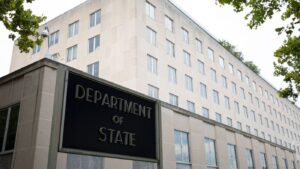Religious Colleges in Rural Areas Face Challenges, Seek Strategic Partnerships
In the serene setting of a chapel in Davenport, Iowa, a prayer echoed off the stone walls, asking for divine guidance for a new partnership between St. Ambrose University and Mount Mercy University. This collaboration between the two Catholic institutions aims to address the challenges that many small, religiously affiliated colleges face today, including declining enrollment and financial difficulties.
St. Ambrose University and Mount Mercy University are taking proactive steps to avoid the fate that has already claimed many similar institutions. “Lord, hear our prayer,” responded the congregation as they prayed for the success of this new venture.
Small religious schools, particularly in rural areas, are closing at an accelerating rate. These institutions play a crucial role in providing higher education to rural students who value the personal touch and religious values offered by these colleges.
Alaina Bina, a junior nursing major at Mount Mercy, expressed mixed feelings about the changes. “Even when I came here on a tour, people would say ‘Hi’ to each other,” she said, appreciating the small-town feel of the campus. The initial news of the partnership brought some apprehension, but Bina acknowledges the necessity of adaptation.
A Mix of Financial and Demographic Challenges
Both St. Ambrose and Mount Mercy have observed the closure of other religiously affiliated colleges. “We just don’t have the demographics anymore,” said Amy Novak, President of St. Ambrose, highlighting the declining number of college applicants, particularly in the Midwest.
More than half of the 79 nonprofit colleges that have closed or merged since 2020 were religiously affiliated. Additionally, over 30 institutions are considered “not financially responsible” by the U.S. Education Department due to low cash reserves and high debt levels.
Institutions like Saint Augustine’s University and St. Francis College have faced significant challenges, including loss of accreditation and staff layoffs. Even renowned institutions like Saint Louis University have had to make difficult financial decisions.
Other religious colleges, such as Bluffton University and St. Norbert College, also face financial headwinds. Some colleges, like Ursuline College and Gannon University, are merging to strengthen their positions, while others like Spring Hill College and Rockhurst University are partnering to expand academic offerings.
Efforts to Work Together on Solutions
In response to these challenges, leaders from 20 Catholic universities and colleges convened to discuss strategies for the future of Catholic higher education. “Survival of the fittest is not the strategy that will advance the common good of Catholic higher education,” said Donna Carroll, president of the Association of Catholic Colleges and Universities.
The American Council on Education has also launched a Commission on Faith-Based Colleges to foster collaboration among religious institutions. Despite the challenges, some religious colleges are experiencing enrollment gains due to political and ideological shifts in the education landscape.
Religiously affiliated institutions often serve low-income, first-generation college students from rural areas. These colleges provide vital access to higher education, especially as public universities in rural states face closures and program cuts.
St. Ambrose and Mount Mercy’s partnership aims to streamline operations and offer a broader range of programs. “Combining means Mount Mercy and St. Ambrose will be able to streamline their administrations,” said Novak.
Keeping Separate Sports Teams
Amidst the changes, students were concerned about the impact on their degrees and sports teams. However, the institutions have assured that their athletic programs will remain separate. “Keeping the athletics teams gives us a piece of Mount Mercy specifically to just hold on to,” said Nasharia Patterson, Mount Mercy’s student government president.
Overall, the reaction to the merger has been mixed among students and alumni. Sarah Watson, a Mount Mercy alumna, recognized the broader challenges faced by higher education today. “I know the great challenges that higher ed is facing right now,” she said.
As religious colleges navigate these uncertain times, the partnership between St. Ambrose and Mount Mercy represents a bold step toward securing their futures. “It’s a leap of faith,” said Carroll. “And who better to take a leap of faith than a Catholic institution?”






